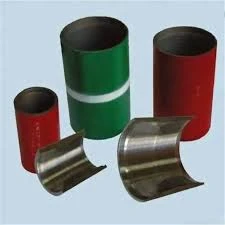- Afrikaans
- Albanian
- Amharic
- Arabic
- Armenian
- Azerbaijani
- Basque
- Belarusian
- Bengali
- Bosnian
- Bulgarian
- Catalan
- Cebuano
- Corsican
- Croatian
- Czech
- Danish
- Dutch
- English
- Esperanto
- Estonian
- Finnish
- French
- Frisian
- Galician
- Georgian
- German
- Greek
- Gujarati
- Haitian Creole
- hausa
- hawaiian
- Hebrew
- Hindi
- Miao
- Hungarian
- Icelandic
- igbo
- Indonesian
- irish
- Italian
- Japanese
- Javanese
- Kannada
- kazakh
- Khmer
- Rwandese
- Korean
- Kurdish
- Kyrgyz
- Lao
- Latin
- Latvian
- Lithuanian
- Luxembourgish
- Macedonian
- Malgashi
- Malay
- Malayalam
- Maltese
- Maori
- Marathi
- Mongolian
- Myanmar
- Nepali
- Norwegian
- Norwegian
- Occitan
- Pashto
- Persian
- Polish
- Portuguese
- Punjabi
- Romanian
- Russian
- Samoan
- Scottish Gaelic
- Serbian
- Sesotho
- Shona
- Sindhi
- Sinhala
- Slovak
- Slovenian
- Somali
- Spanish
- Sundanese
- Swahili
- Swedish
- Tagalog
- Tajik
- Tamil
- Tatar
- Telugu
- Thai
- Turkish
- Turkmen
- Ukrainian
- Urdu
- Uighur
- Uzbek
- Vietnamese
- Welsh
- Bantu
- Yiddish
- Yoruba
- Zulu
Efficient Techniques for Using a Pipe Threading Tool in Plumbing Projects
Understanding the Pipe Threader A Crucial Tool for Plumbing and Construction
In the worlds of plumbing and construction, the pipe threader stands out as an essential tool. This device, designed to create screw threads on the ends of pipes, enables the seamless joining and fitting of various pipe types, ensuring leak-free connections in a multitude of applications. Understanding the functionality, usage, and types of pipe threaders can enhance the efficiency of plumbing tasks and highlight the significance of this tool in both residential and industrial settings.
What is a Pipe Threader?
A pipe threader is a mechanical device that cuts grooves into the ends of pipes, allowing them to be screwed together securely. This process, known as threading, is crucial because most plumbing systems rely on threaded pipes to create strong, leak-proof joints. Without proper threading, joints may fail, leading to leaks, water damage, and costly repair efforts. Pipe threaders come in various forms, including manual, electric, and hydraulic models, catering to different user needs and project scales.
Types of Pipe Threaders
1. Manual Pipe Threader This type involves using a ratchet handle and die set to manually cut threads on the pipe. While it requires more physical effort and is slower compared to electric models, it is often favored for small jobs or in situations where power sources are unavailable. Its simplicity makes it a staple for amateur plumbers and handyman projects.
2. Electric Pipe Threader Designed for efficiency and speed, electric pipe threaders automate the threading process. These tools can handle larger diameter pipes and perform threading tasks much more quickly than manual models. Electric threaders are commonly used in professional plumbing applications and large construction projects where time and labor costs are a concern.
pipe threader

3. Hydraulic Pipe Threader Typically used in industrial settings, hydraulic threaders offer powerful threading capabilities, allowing for the rapid processing of heavy-duty pipes. They can achieve precise threads with minimal effort, making them ideal for high-volume environments where productivity is paramount.
How to Use a Pipe Threader
Using a pipe threader requires careful attention to detail and safety protocols. Before starting, one must ensure the pipe is clean and free from burrs, as any irregularities can affect the quality of the threads. Following this, the appropriate die must be selected and mounted onto the threader. For manual threaders, the pipe is inserted, and the ratchet handle is turned in a specific manner to cut the threads. Electric and hydraulic threaders streamline this process, allowing for quicker and more effortless operations.
Safety Tips
While using a pipe threader, safety should always be a priority. Operators should wear appropriate protective equipment, including gloves and eye protection, to guard against metal shavings and debris. Properly securing the pipe before threading is essential to prevent accidents, and users should always follow the manufacturer’s instructions to ensure safe operation.
Conclusion
The pipe threader remains a vital tool for anyone involved in plumbing and construction. Its ability to create reliable connections between pipes not only facilitates efficient installations but also contributes to the longevity and safety of plumbing systems. Whether opting for a manual, electric, or hydraulic model, understanding how to effectively use and maintain this tool can significantly impact the quality of work produced in the field. In a world where water management is critical, the pipe threader plays a quiet yet indispensable role in ensuring systems function as intended.
-
Tubing Pup Joints: Essential Components for Oil and Gas OperationsNewsJul.10,2025
-
Pup Joints: Essential Components for Reliable Drilling OperationsNewsJul.10,2025
-
Pipe Couplings: Connecting Your World EfficientlyNewsJul.10,2025
-
Mastering Oilfield Operations with Quality Tubing and CasingNewsJul.10,2025
-
High-Quality Casing Couplings for Every NeedNewsJul.10,2025
-
Boost Your Drilling Efficiency with Premium Crossover Tools & Seating NipplesNewsJul.10,2025







